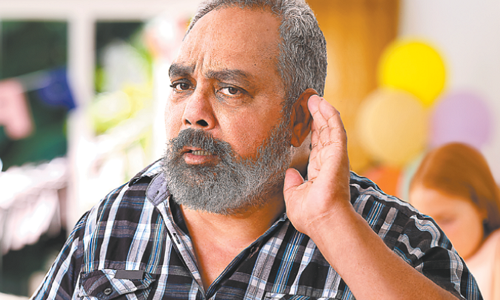When hearing loss is not addressed it harms many aspects of life.

Communication and speech
Unaddressed hearing loss affects the way people connect and communicate; this can have a profound effect on language development in children and hamper communication among adults.
Cognition
Language deprivation can lead to delayed cognitive development in children, which can be avoided if suitable intervention is received during the initial years of life. In older adults, unaddressed hearing loss is associated with mental and physical declines and with higher rates of age-related dementia.
Education and employment
In developing countries, children with hearing loss and deafness often do not receive schooling. Adults with hearing loss also have a much higher unemployment rate. Among those with hearing loss who are employed, a higher percentage are in lower grades of employment, earn lower wages, or retire earlier than their hearing peers.
Social and emotional
Although hearing loss contributes to social isolation and loneliness at all ages, these are experienced more specifically in people of older ages.
The impaired ability to comprehend auditory information and maintain conversations may lead to avoidance of potentially embarrassing social situations. Lack of social engagement and loneliness, especially in older people, may further contribute to cognitive decline and depression.
Economic
Along with the distress experienced by individuals with hearing loss and the financial costs faced by families, unaddressed hearing loss results in an annual cost to Australia’s economy of $30 billion dollars. This includes costs for the health sector (which exclude costs of hearing care such as hearing screening, hearing aids, implants or rehabilitation); costs of educational support; and costs resulting from loss of productivity and taxes.
Book a hearing check
If you are concerned about your hearing or are experiencing hearing loss, a test by a hearing care professional can help determine the type of hearing loss and how much it has progressed. Take this link to an Australian Government website.

Australia’s high levels of untreated hearing loss.
Untreated hearing loss presents a substantial economic burden to both the individual and society. It has been estimated that people who have untreated hearing challenges tend to have much higher general healthcare costs than those without hearing loss – as much as 50% more. Along with the distress experienced by individuals with hearing loss and the financial costs faced by families, hearing loss results in an annual cost to Australia’s economy of $30 billion dollars. This includes costs for the health sector (which exclude costs of hearing care such as hearing screening, hearing aids, implants or rehabilitation); costs of educational support; and costs resulting from loss of productivity and taxes.
Few people who could benefit from help with their hearing seek it – for example, only 30% of adults over 70 years old who would benefit from a hearing aid report using one, and the average delay from being aware of a need to address hearing loss to the time that treatment is started is 8 years. Socioeconomic, racial/cultural, and geographical barriers mean that these disparities disproportionately impact marginalised groups. Outside the capital cities and regional centres, access to hearing health care is limited by the travel distance to the nearest provider. Interestingly, both individuals and healthcare providers living in areas with low healthcare access tend to have poorer awareness of the benefits associated with the diagnosis and treatment of hearing loss.
Access to hearing aids is one crucial link in the effort to address untreated hearing loss in the community, together with public awareness, a supportive community, a competent workforce, and a hearing-safe living and working environment.
But for hearing aids to truly aid, some challenges must be tackled. First and foremost, cost. National universal health coverage plans should consider including hearing aids and other hearing care to reduce out-of-pocket payment.
Affordable devices remove the financial barrier, yet other factors influencing people’s willingness to use hearing aids still stand in the way.
A second challenge would be to mobilise people. Raising awareness of hearing loss and the harm of untreated hearing impairment is a key first step. Providing clear labelling, trial use, and easy-return policies can further remove hesitation to use hearing aids. More importantly, we should strive to de-stigmatise hearing loss. Unless we change how societies view people wearing hearing aids and actively engage the community to support people with hearing loss, we can hardly improve the health inequities experienced by this population.
A final challenge lies in the shortage of qualified workforce in rural and remote parts of countries such as Australia, and professionals with particular skills such as ENTs and clinicians qualified to work with babies and infants, and ENTs, to deliver prevention, treatment, and rehabilitation for people with hearing loss. The long-term solution would be through a health system strengthened with a focus on primary care. Primary care workers can play an important role in expanding access to hearing care by participating in screening, raising awareness, and delivering treatment such as fitting hearing aids. And their work is likely to be cost-effective.
Hearing loss, a pressing yet often invisible problem requires more attention from Australian researchers and a systematic effort that considers the various needs of diverse and vulnerable groups across the life course.
Sources:
Core Values in the Traditional Provision of Hearing Health Care
